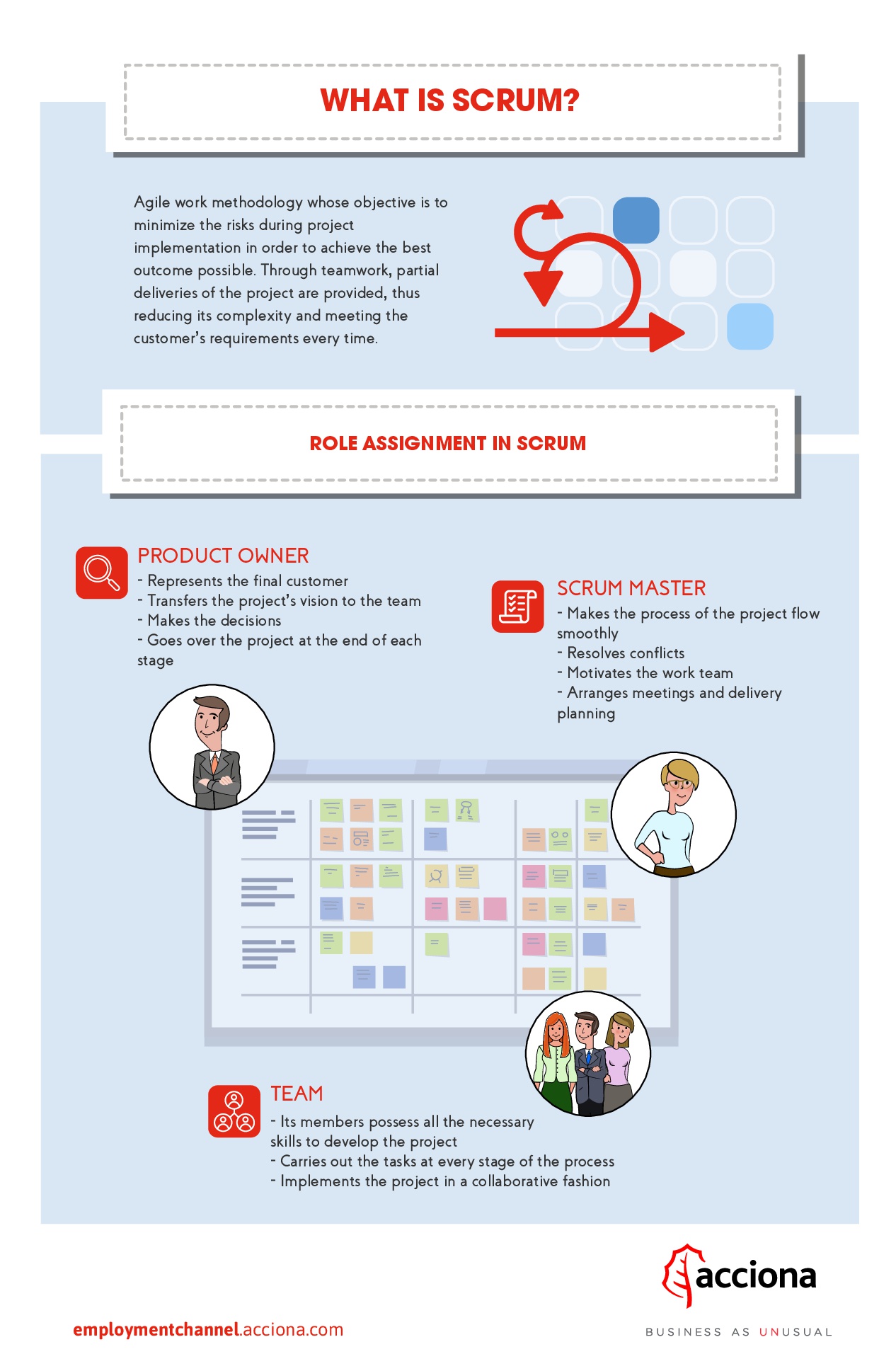As a result, Takeuchi and Nonaka noticed that the companies under analysis shared a series of common features when implementing said projects. In particular, they identified similar ways to organize work, resemblimg a Scrum or melee, one of the various strategies used heavily by rugby players when attempting to gain possession of the ball, which requires full team cooperation.
What is SCRUM?
Although there’s no definitive consensus on its definition yet, the concept of Scrum is part of the dictionary of many organizations that have adopted agile methodologies.
According to Jerónimo Palacios, expert in agile organizational methods, “it is a framework, not a methodology; an implementation of the Agile Manifesto, not a part of the Agile Manifesto”. Palacios advocates for Scrum and its ability to make companies embracing it “improve between 4 to 10 times their productivity, time-to-market and competitiveness ratios”.
The specialist in agile methodologies Steve Denning, for his part, argues that Scrum “is the simplest idea under the sun: find what customers really want, and then deliver it as soon as possible. It’s not only a set of tools or a new business procedure […]. It entails a fundamental transformation of work management, a new way of thinking, talking and acting in the workplace, both for professionals and their managers”.
If we resort to the definition provided by Scrum.org, an organization which, along with Scrum Alliance, is devoted to the promotion of this concept, “it’s a management procedure which reduces the complexity of product development to meet the needs of customers”.

Scrum model phases
One of the main keys to be taken into account within organizations implementing Scrum is regular iteration with the customer or final user, standardized and scheduled from start to finish during project development.
The first step is to set up its features. For that purpose, a compendium of the so-called “user stories” which comprise product backlog is elaborated. After that, “user stories” are sorted out in order to stablish which ones should be prioritized. The chosen ones make up the release backlog eventually.
Scrum compels to estimate how long will it take to complete each story from the release backlog. The longest can be subdivided, in turn, into smaller, time-manageable tasks. With all those estimations in mind, the team will be able to get an approximate forecast of how long will it take until the completion of the customer’s project.
Another phase of Scrum is empiricism. The customer is given actual representations of the different parts of the project already tested by the team in order to check their proper operation. Each of these deliveries is called a sprint, so the release backlog is equally divided into several sprint backlogs. The duration of each sprint is between 2 and 30 days.
One of the routines required by this methodology is a daily scrum in which, in order to achieve an efficient and effective project and product development, there must be a good communication flow among the members of the team. These are short meetings where a summary of the tasks completed the previous day is presented, as well as a report of the issues arisen so that the rest of the professionals in the team can contribute ideas on how to solve them.
Before finishing off each sprint, Scrum requires an account of every daily meeting so as to have the most accurate picture possible of hits and misses according to what’s planned in backlogs.
The final stage is performance measurement, so that all parties involved can receive feedback on the whole procedure development and learn from it with regard to future projects that require Scrum implementation.
How is Scrum performance measured?
One of the advantages of Scrum is the possibility of quantifying the effectiveness and efficacy of its implementation into project and product development. In this sense, the main metric available to the team is the value provided to the customer, an information that will allow the latter to know the ROI speed rate and take proper action if required (new project implementation stages or cancellation, for instance)
Other usual Scrum KPIs allow engagement measurement. For this purpose, two formulas can be used:
- the engagement indicator is obtained dividing the number of planned and delivered sprint tasks by the number of planned sprint tasks.
- the final engagement indicator, dividing the number of sprint tasks delivered by the number of planned sprint tasks.
As for Scrum quality, it is measured by counting the number of incidences per sprint. This way we can obtain 2 types of metrics: incidences reported by the customer, and those detected by the team in charge of product development.
The team’s degree of planning can be measured from the average number of tasks delivered per sprint. The outcome will present us with a perspective as objective as possible about the aptitude of the team as a whole. Other two interesting Scrum metrics are changes and requirements added over the initial approach of the project, and ideal number of workdays pending.
Either during metric assessment stages, or during the previous product development process, it is certain that Scrum is a procedure, framework or agile methodology that can be very useful. Mainly for those organizations that bet on innovation both internally, with a view to arrange and structure the work of their professionals, and externally, providing an undeniable value to the customer or final user.
Sources: Forbes, ProyectosAgiles.org, Deloitte, jeronimopalacios.com, Scrum Alliance, Scrum.org and Harvard Business Review